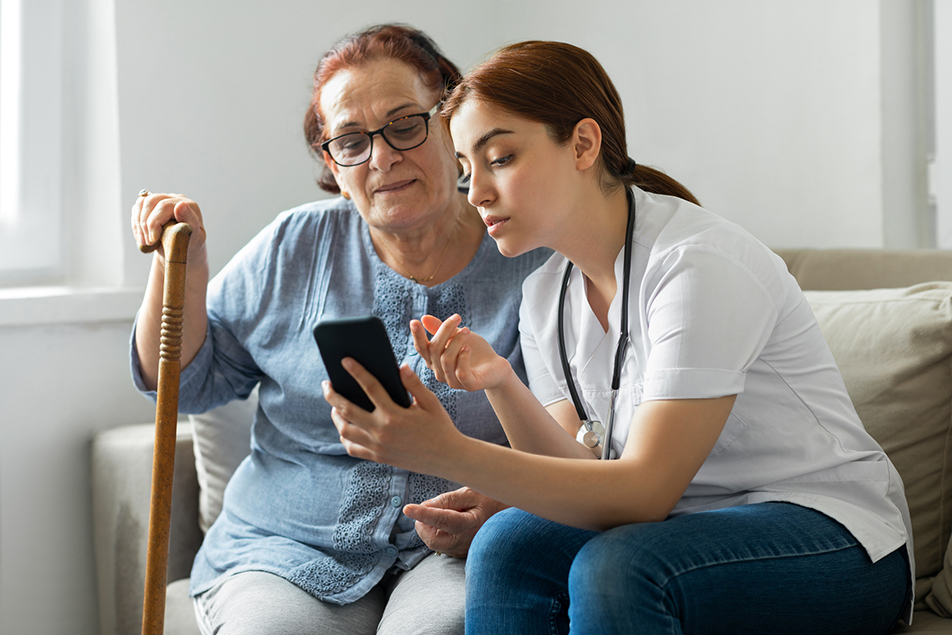
According to the Parkinson’s Foundation, nearly 60,000 Americans are diagnosed with the disease each year and more than 10 million are currently living with it. A key to improving quality of life is establishing an effective treatment regimen. Tara Kimbason, MD, Parkview Neurosciences, explained how medications designed to treat Parkinson’s disease work, the surprising side effects and why communication with your care team is key.
How do physicians develop a medication regimen for a patient with a Parkinson’s disease diagnosis?
A Parkinson's disease treatment plan is very personalized. Their medication regimen depends on their lifestyle, preferences for how the medication is delivered to the body (pill, injection, patch, etc.) and tolerance.
The most common type of medication is levodopa, which is absorbed into the brain and converted into dopamine. This helps send messages from the brain to the nerves in the body to control movement. Throughout the treatment process, what we’re concerned with is how quickly the medication begins working and if it begins wearing off before the patient is due for their next dose.
It used to be that we only had access to short-acting medications that were helpful but needed to be taken more often or long-acting medications that were less effective. But today, we have different variations that can be combined to help deliver consistent symptom management from dose to dose.
How do you ensure a medication treatment plan is working for the patient?
Communication is really key when it comes to refining a medication regimen. I encourage patients and their caregivers to keep a diary to document the medications they take, at what time(s) and when they notice symptoms. How quickly does it work to control tremors? Do you experience less rigidity and within how many minutes? If it takes too long to see improvement, we can adjust the medication or medication delivery to try and improve that response. Sometimes, patients with Parkinson’s experience gastroparesis (partial paralysis of the stomach) and it can be helpful to choose a medication delivery mechanism that bypasses the stomach.
Some patients need a rescue medication, and others don’t. It’s all very personalized, and the feedback we receive is so helpful in formulating the most effective plan. We have patients check in with us every three months so that we can continue evaluating their body’s response to the medication prescribed and optimizing results. If they’re doing well, we might move it out to six months.
Are there any specific side effects that patients and caregivers should be looking for?
The most common side effects associated with Parkinson’s medications are nausea, fatigue and leg swelling. In rare cases, patients experience severe vomiting.
Within the group of medications prescribed to treat Parkinson’s, there are some that can cause impulsive control disorder, which might mean excessive gambling or shopping sprees (in person or online). They can also cause sleep attacks, meaning a patient falls asleep quickly and in dangerous situations, such as while driving or standing up.
This is where communication and documentation are so important. While the patient might not notice anything, a spouse or loved one could pick up a change in behavior and help us adjust the care plan accordingly. If your loved one is on medication to treat the disease and does something that has you scratching your head, it’s imperative that you tell their physician. This allows us to evaluate whether it’s a progression of the disease or a response to the medicine.
Aside from nausea, sleep attacks or impulsive behavior, you should tell your doctor if you or your loved one experience an increase in falls, fatigue or weight loss, or stop interacting with others in a normal capacity.
Are there any tactics that can help reduce the side effects of these medications?
Certainly, compliance and routine can help with the efficacy of the medicine. Patients should try to take their prescriptions at the same time every day. It can be difficult to track the body’s response to the medications if you take them at random times.
And, beyond that, they should try to follow a set, consistent schedule, with three meals a day, hydration and good sleep hygiene. This helps the body absorb the medication properly, but also, people with neurodegenerative disorders have a better response when there is structure.
I encourage patients and their loved ones to keep an open mind when it comes to treatment. Instead of thinking that we can only use one medication and maximize it, it’s helpful to stay open to combining different medications. Every patient progresses differently, and we can’t predict how many neurons they have with viable dopamine cells, or which delivery mechanism will work best. There are no guarantees, but if you stay open-minded and partner with your care team we can tailor a regimen to your specific needs.
Is medication the only form of treatment for Parkinson’s disease?
Patients have the best results when they pair medication with other specialties, such as physical therapy. While an individual might not think they need physical therapy, we have them go at least once a year to learn about how to cope with certain situations, such as their gate freezing. They can learn to pick up on cues from their body and then proactively prevent subsequent risks, such as falls. They can work on relaxing muscles and addressing rigidity when it sets in.
Parkview also has a wonderful multidisciplinary Movement Disorders Clinic, designed to come alongside patients and address the whole picture for conditions such as Parkinson’s disease. The most important thing is to keep the lines of communication open with your doctor and continue to refine your treatment regimen for best results.



